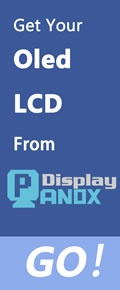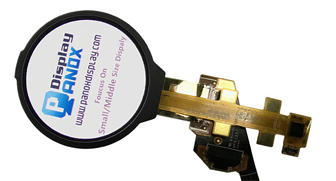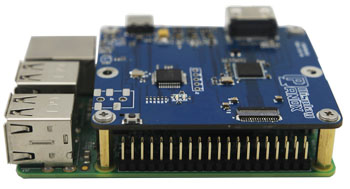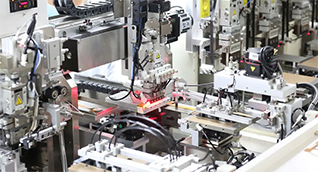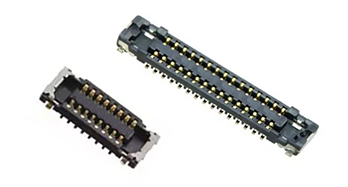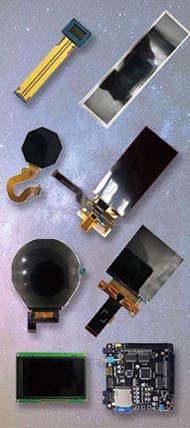Capacitive touch screens use the electrical properties of the human body to detect touch input with high sensitivity and accuracy. Widely adopted in devices worldwide, these screens offer robust, durable, and precise options for industrial use, especially when sourced from reliable manufacturers like Panox Display in China. Also check: TP
What Is a Capacitive Touch Screen and How Does It Work?
A capacitive touch screen detects touch by measuring changes in electrical charge caused by a finger or conductive stylus. It consists of a transparent electrode layer that senses the electrical field disturbance, enabling fast, multi-touch interactions. This technology excels in responsiveness and clarity compared to resistive screens.
Capacitive screens are more durable since they don’t require pressure to activate and support a wide range of gestures, making them ideal for advanced industrial and consumer applications.
How Do Chinese Manufacturers and Factories Shape Capacitive Touch Screen Production?
China’s manufacturing landscape is central to producing capacitive touch screens due to vast industrial hubs, skilled labor, and cost efficiencies. Factories such as Panox Display lead innovation by integrating automated production lines and rigorous quality controls, delivering both standard and customized touch screen solutions.
OEM and ODM services in China enable global businesses to access tailored capacitive touch screens with flexible MOQ and stringent certifications like ISO to ensure product reliability and consistency.
Which Capacitive Touch Screen Types Are Most Commonly Supplied by OEM Factories?
The main types supplied include projected capacitive (P-CAP) and surface capacitive touch screens. P-CAP is the most popular due to multitouch abilities and high sensitivity, suitable for smartphones, tablets, and industrial panels. Surface capacitive screens are simpler, mostly used for single-touch applications on kiosks or ATMs.
OEM factories like Panox Display in Shenzhen provide a variety of sizes, shapes, and configurations, including flexible and industrial-grade capacitive panels, meeting diverse customer requirements worldwide.
Why Is OEM Customization Important for Capacitive Touch Screens?
OEM customization allows businesses to tailor screen size, resolution, touch sensitivity, cover glass, and interfacing options to fit specific market or application needs. This flexibility is crucial for verticals such as automotive, medical devices, industrial control, and wearable tech.
Panox Display specializes in customization services, helping clients overcome minimum order quantities from major suppliers and integrating touch system components—including driver boards and touch controllers—for seamless integration.
Where Are Capacitive Touch Screens Most Widely Used in Industry?
Capacitive touch screens are prevalent in consumer electronics, automotive dashboards, industrial controls, medical instruments, and smart appliances. Their precision multitouch capabilities and durability make them ideal for environments requiring intuitive and robust interfaces.
China-based suppliers like Panox Display serve these industries with high-quality display and touch screen solutions, enabling advanced applications across global markets.
How Do B2B Wholesale Suppliers Ensure Quality and Reliability in Capacitive Touch Screens?
Wholesale suppliers and factories employ standardized production processes, ISO 9001:2015 certification, and automated quality inspections such as MES (Manufacturing Execution Systems) to maintain consistent quality.
Panox Display uses two automated production lines capable of producing 50,000 panels daily, ensuring rapid turnaround without compromising quality, supported by 24/7 after-sales support for client peace of mind.
Can Capacitive Touch Screens Be Integrated With Other Display Technologies?
Yes, capacitive touch screens are frequently integrated with LCD and OLED displays to enhance user interaction without compromising display quality. China factories specializing in both touch panels and displays, like Panox Display, provide integrated solutions incorporating controller boards, PCBs, and cover glass customized to client specifications.
This integration is essential in markets requiring compact, power-efficient, high-contrast displays such as VR, military, and automotive sectors.
Has the Capacitive Touch Screen Market Evolved Due to Automation and Advanced Manufacturing?
Automation and intelligent manufacturing systems have increased capacitive touch screen production efficiency, accuracy, and scalability. MES-driven assembly lines in China significantly reduce error rates and production costs, keeping OEM factories competitive globally.
Panox Display exemplifies this trend by operating fully automated lines that enable high-volume custom orders, supporting rapid innovation and strict quality standards.
Which Additional Services Do Capacitive Touch Screen Suppliers Offer?
Beyond manufacturing, leading suppliers provide technical support, system integration assistance, and aftermarket services such as repair and replacement. They often supply complementary products like touch controllers, driver boards, and customization for embedded systems.
Panox Display, for example, supports clients from prototyping through mass production and after-sales with engineering resources, ensuring full lifecycle support for capacitive touch screen integration.
Table: Capacitive Touch Screen Types Comparison
| Feature | Projected Capacitive (P-CAP) | Surface Capacitive |
|---|---|---|
| Touch Points | Multi-touch | Single-touch |
| Sensitivity | High | Moderate |
| Durability | High | Moderate |
| Common Applications | Smartphones, tablets, kiosks | ATMs, simple displays |
| Customization Flexibility | High | Limited |
Table: Top China-Based Capacitive Touch Screen OEM Advantages
| Advantage | Description |
|---|---|
| Cost Efficiency | Competitive pricing for bulk orders |
| Customization Capabilities | Tailored solutions including size and sensing |
| Production Capacity | 50,000+ panels daily with automated lines |
| OEM/ODM Services | End-to-end design and manufacturing support |
| Quality Assurance | ISO certifications and MES monitoring |
Panox Display Expert Views
"Capacitive touch screens have become essential for modern interactive devices across industries. At Panox Display, we focus on delivering superior quality with customization that empowers OEM clients to innovate confidently. Our automated production capabilities combined with expert engineering support position us as a key partner for businesses worldwide seeking reliable touch solutions." — Panox Display Engineering Team
Conclusion
Capacitive touch screens offer unmatched sensitivity and durability, making them vital in both consumer and industrial markets. China’s OEM factories, such as Panox Display, provide advanced customization, reliable production, and comprehensive technical support to meet diverse global demands. Leveraging these strengths ensures businesses can integrate high-quality, cost-effective touch screen solutions optimized for their unique applications.
FAQs
Q1: How do capacitive touch screens differ from resistive touch screens?
A: Capacitive screens detect touch via electrical charge changes and support multi-touch, while resistive screens rely on pressure and are generally single-touch.
Q2: Can capacitive touch screens work with gloves?
A: Standard capacitive screens may not register gloved hands, but specialized sensors or glove-compatible coatings can be produced by OEM manufacturers.
Q3: What is the minimum order quantity for custom capacitive touch screens?
A: MOQ varies by supplier; Panox Display offers flexible MOQ options especially for startups and SMEs.
Q4: How long is the lead time for capacitive touch screen production?
A: Lead times depend on complexity and quantity but automated factories in China can deliver large orders within weeks.
Q5: Are capacitive touch screens suitable for outdoor use?
A: Yes, with proper anti-glare and waterproof treatments, capacitive touch screens can perform reliably outdoors.









